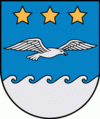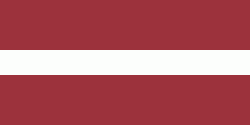Jūrmala
 |
 |
While Latvia was part of the Soviet Union, Jūrmala was a favorite holiday-resort and tourist destination for high-level Communist Party officials, particularly Leonid Brezhnev and Nikita Khrushchev. Although many amenities such as beach-houses and concrete hotels remain, some have fallen into disrepair. Jūrmala remains a tourist attraction with long beaches facing the Gulf of Riga and romantic wooden houses in the Art Nouveau style.
The name Jūrmala stems from Latvian jūra ("sea") and mala ("edge", "side", "margin"), thus "seaside" in English.
In 1920, soon after Latvian independence, the town of Rīgas Jūrmala ("Seaside of Riga") was established. In German it became known as Rigasche Strand and Riga-Strand (Beach of Riga), and advertised as part of Baltische Riviera (the Baltic Riviera)
During World War II, Jūrmala lost its autonomy and by 1946 it was a district of Riga. In 1949 this district was enlarged to include Priedaine. Finally, in 1959 the district of Jūrmala was removed from the city of Riga and merged with the health resorts Sloka and Ķemeri to establish Jūrmalas pilsēta (City of Jūrmala). In publications dating from the Soviet period, the city name was occasionally spelled in English as "Yurmala", a back-transliteration from Russian Юрмала.
As a result of the administrative territorial reform of Latvia in 2009, Jūrmala became one of the republican cities of Latvia (Republikas pilsētas), and is currently (2011) the fifth largest by population. The republican cities were replaced with state cities (Valstspilsētas) after the 2021 administrative reform.
Map - Jūrmala
Map
Country - Latvia
 |
 |
| Flag of Latvia | |
After centuries of Teutonic, Swedish, Polish-Lithuanian and Russian rule, which was mainly executed by the local Baltic German aristocracy, the independent Republic of Latvia was established on 18 November 1918 when it broke away from the German Empire and declared independence in the aftermath of World War I. However, by the 1930s the country became increasingly autocratic after the coup in 1934 establishing an authoritarian regime under Kārlis Ulmanis. The country's de facto independence was interrupted at the outset of World War II, beginning with Latvia's forcible incorporation into the Soviet Union, followed by the invasion and occupation by Nazi Germany in 1941, and the re-occupation by the Soviets in 1944 to form the Latvian SSR for the next 45 years. As a result of extensive immigration during the Soviet occupation, ethnic Russians became the most prominent minority in the country, now constituting nearly a quarter of the population. The peaceful Singing Revolution started in 1987, and ended with the restoration of de facto independence on 21 August 1991. Since then, Latvia has been a democratic unitary parliamentary republic.
Currency / Language
| ISO | Currency | Symbol | Significant figures |
|---|---|---|---|
| EUR | Euro | € | 2 |
| ISO | Language |
|---|---|
| LV | Latvian language |
| LT | Lithuanian language |
| RU | Russian language |















